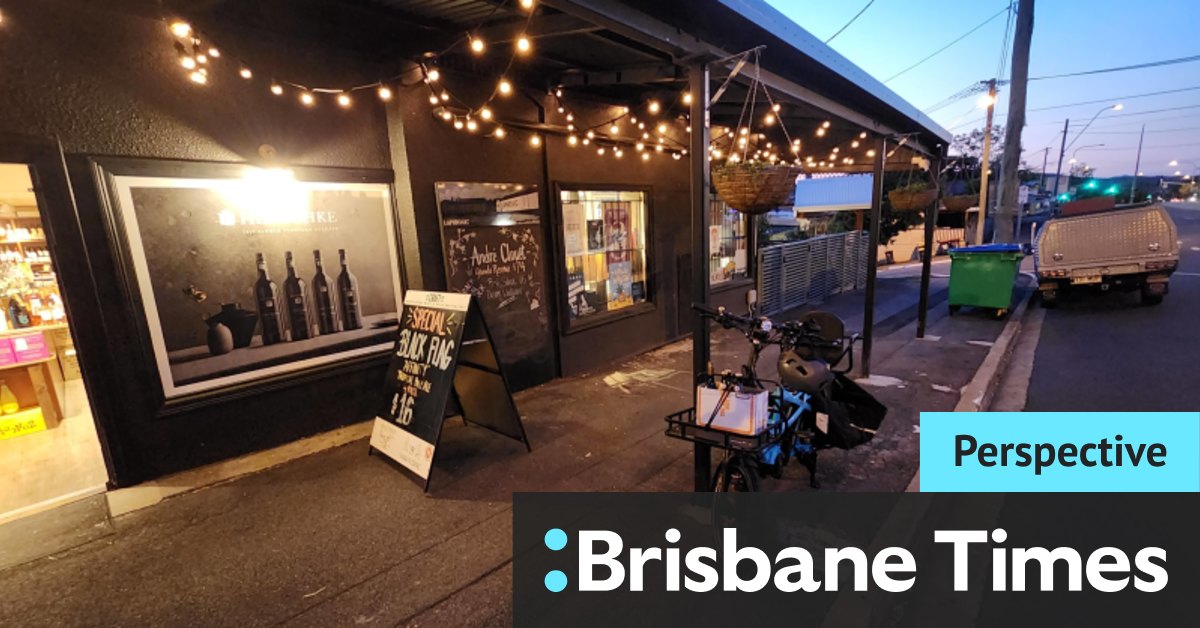Cargo bikes, with a bucket in front or a longtail with extra room at the back, and e-bikes make it simple to move not just stuff, but passengers too.
Shopping using a regular bike and panniers.Credit: Chris Cox
But the movement is not restricted to cargo bikes.
I regularly see people on regular bikes carrying shopping or commuting using racks, baskets and panniers – bags strapped to either side.
On a more adventurous level, I have watched someone use tie-down straps to attach two garden chairs to the back of their non-electric bicycle from kerbside clean-up just the other day.
Sure, there are some things too big to carry by bike.
But this idea that you must have a SUV or monster ute because you need to carry things all the time is incongruous with the fact most people visiting suburban high streets are not purchasing lounge sets and flat-screen TVs, but instead meeting up with friends for a coffee and lunch, buying a couple of books or browsing the clothes racks.
And again: sorry, have you seen some of the things people move by bike?
University of Queensland research showed drivers to Boundary Street, West End spent more ($49) than people who walked ($30) or rode a bike ($22), but they might be seeking to “maximise the return on their less frequent visits to Boundary Street”.
However, previous studies have shown non-motorists spend more money per month when visiting shopping precincts than car users because they visit more often.
Loading
UQ researcher Dr Associate Professor Dr Dorina Pojani said it would be desirable to turn at least one on-street parking lane on Boundary Street into a bike lane – there is currently parking on both sides of the street – while prioritising bays for disability parking.
One-third of visitors travelled less than three kilometres to get there.
But this is not really about bikes. It’s about creating more welcoming and beautiful public spaces where people want to meet and connect rather than an ambience dominated by rumbling engines.
As the place maker Fred Kent says in the documentary The Place Man: “If you plan your cities for cars and traffic, you get more cars and traffic. If you plan it for people and places, you get more people and places.”

